1. "Live out your own Star Wars story": Inhabiting planets through eating
[1.1] On May 31, 2019, Star Wars: Galaxy's Edge (https://disneyland.disney.go.com/en-ca/destinations/disneyland/star-wars-galaxys-edge/) opened at Disneyland Resort in California, promising fans an entirely immersive experience "where you can live out your own Star Wars story." Later that year in August, the land launched at Florida's Walt Disney World Resort. Disney's marketing for the new theme park expansion centered fans' bodies in these sprawling story-spaces, advertising the chance to fly the Millennium Falcon, build a custom lightsaber, talk to stormtroopers, tuck into cantina grub, and walk around Black Spire Outpost (the in-universe location for Galaxy's Edge). In designing the Galaxy's Edge experience, Disney Parks emphasized the role of food in transporting guests to a galaxy far, far away; for example, the Galaxy's Edge website proudly proclaims you can "sip on the blue or green milk that Luke Skywalker famously drank." Taste becomes an essential component of the 360-degree "sensory pilgrimage" promised by Disney Parks (Steur 2021, 163). While the Star Wars motion simulator attraction Star Tours has been operating at Disney Parks since 1987, Galaxy's Edge provided fans a sweeping physical extravaganza of architecture, shops, attractions, and restaurants beyond the scope of a single Star Wars-themed ride (Williams 2019, 136). Imagineering managing story editor Margaret Kerrison explains that designing the visceral and tangible elements of Galaxy's Edge—like food and drink—was a unique challenge for Disney Parks since the core of the Star Wars franchise (the Skywalker Saga films) couldn't transmit "a scent or taste" beyond the filmic image, and yet Disney Parks was tasked with designing menus that would "feel as though it was part of those fictional worlds" (quoted in Ratcliffe 2021, 213). By trying exotic, extraterrestrial delicacies at Galaxy's Edge, the fan can travel to and inhabit the Star Wars universe. Rebecca Williams describes Star Wars: Galaxy's Edge as a prime example of "haptic fandom" where "tastes, smells, sounds and physical movements that are part of the narrative world are experienced through the park" (2019, 143–44). Beyond food, immersion is enhanced through the land's roaming characters (Rey, Kylo Ren, Chewbacca, Finn, Poe Dameron, and Vi Moradi), references to Batuu peppered throughout the Lucasfilm transmedia publishing, and the Star Wars: Datapad mobile application, which guests can use to translate Aurebesh, hack into spaceport objects, tune into transmissions, and take on secret jobs to support either the Resistance or the First Order. Food serves as an interface to a place that is very much alive (figures 1–2).
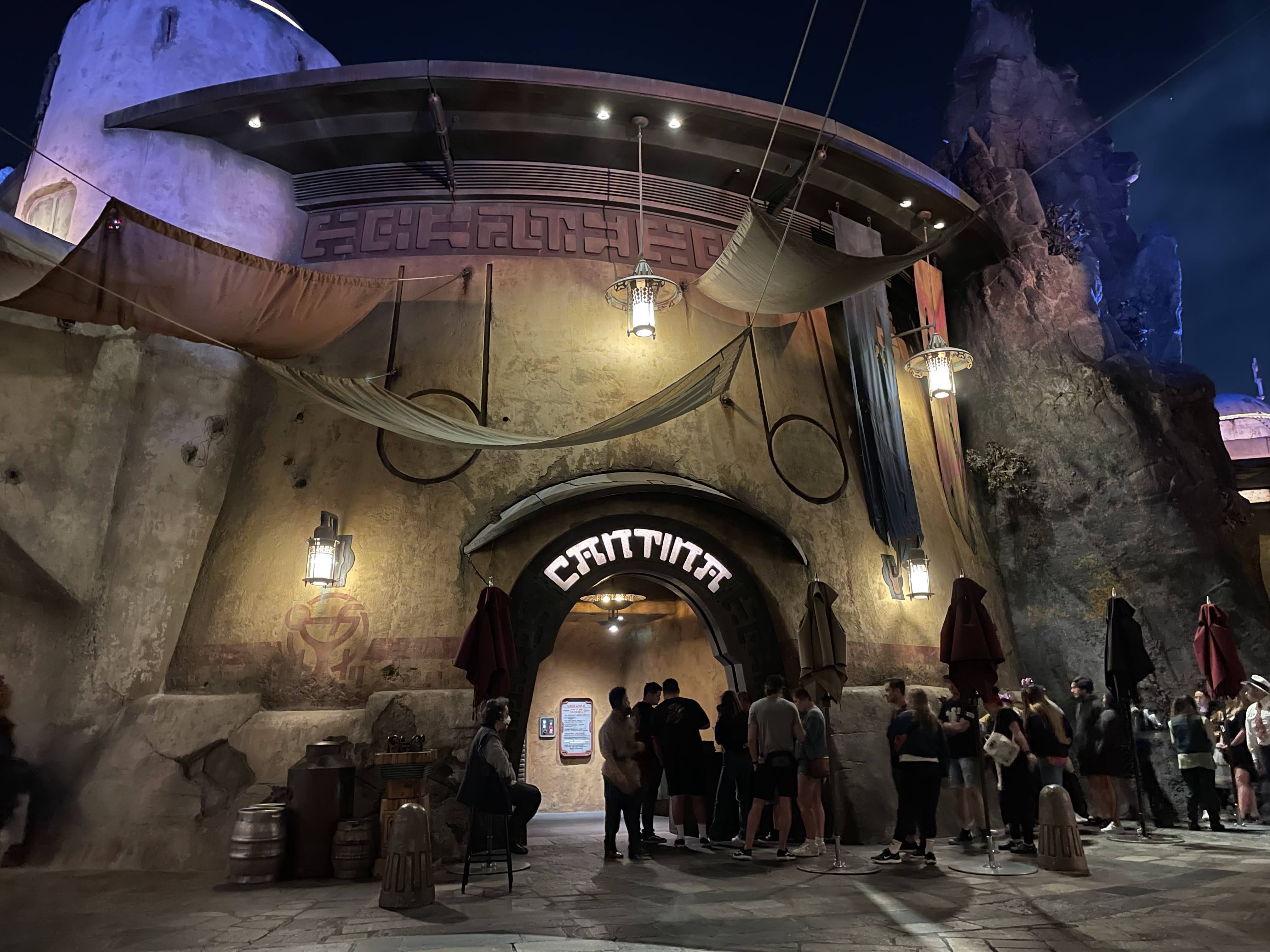
Figure 1. A long line of visitors waiting to enter Oga’s Cantina at Galaxy’s Edge, one of the theme park’s most notable restaurants. Photo courtesy of Cyrus R. K. Patell.
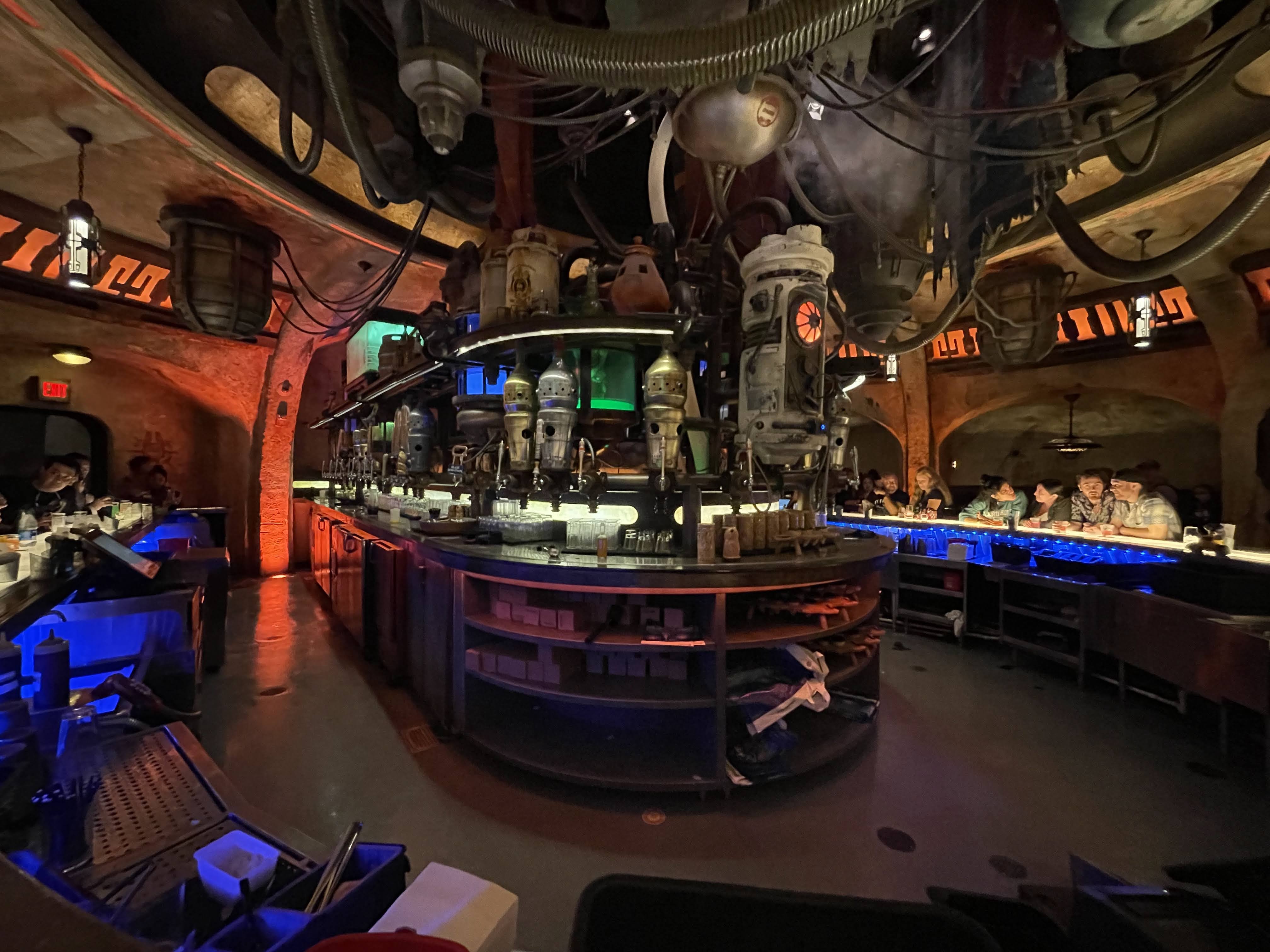
Figure 2. The interior of Oga’s Cantina, modeled after the seedy Mos Eisley watering hole in A New Hope (1977). Photo courtesy of Cyrus R. K. Patell.
[1.2] Media scholars study Star Wars as a transmedia franchise consisting of films, television shows, cartoons, video games, comics, novels, theme park attractions, toys, and more in order to parse the Star Wars phenomenon as a complex, "vast" network of narratives (Harrigan and Wardrip-Fruin 2009, 1). Henry Jenkins famously defined transmedia storytelling as "a process where integral elements of a fiction get dispersed systematically across multiple channels for the purpose of creating a unified and coordinated entertainment experience" (2007). Jenkins notes that this "unified and coordinated" experience tends to be more disorderly in real life, with "unauthorized, grassroots expansion of the text by fans" and franchises that might favor "diversity over coherence" (2009). Perhaps due to the privileging of the textual over the spatial or haptic, material fan practices such as cosplay, collecting, fan tourism, prop making, and fan cooking have been historically neglected (Rehak 2014). This oversight is surprising since culinary practices offer an ideal analogy for the transfiguration of story ingredients across transmedia, from "mashups" to "spoilers" and the act of "textual poaching," with fans foraging like "hunters and gatherers" across textual landscapes to concoct their own versions of a film or television show (Jenkins and Scott 2012, xxiv). Star Wars is often cited as the prototypical example of a transmedia franchise, and in many ways the success of the original trilogy launched the now-common phenomenon of telling a story across several platforms (Guynes and Hassler-Forest 2018, 11). Studying food as a form of transmedia at Galaxy's Edge, the newest iteration of the landmark transmedia franchise, expands the scope of textuality to the body as fans literally consume stories in their bloodstream and immerse themselves in fictional worlds. Galaxy's Edge food is the latest and most ambitious foray in the long tradition of Star Wars food merchandising, from cereal boxes and PEZ candy dispensers to kitchen gadgets and licensed cookbooks. Food was even referenced in the first Star Wars television project, the 1978 Star Wars Holiday Special, with a brief cooking show segment starring the four-armed chef Gormaanda whipping up a bantha surprise dish.
[1.3] Rivaling the startling variety of Star Wars transmedia offerings, the meals at Galaxy's Edge encompass a wide variety of ingredients, textures, flavors, and packagings to make the fans feel like they are on another planet nestled within many alien star systems. Menus are advertised as "farm to table" style, with the majority of ingredients sourced locally from the Outer Rim planet Batuu (Dunlap 2019). A backwater planet located just before Wild Space that was once a popular stopover for galactic travelers before the opening of hyperspace routes, Batuu is home to Black Spire Outpost, a trading settlement where smugglers, pirates, spacers, spies, and fugitives can avoid detection ("Batuu"). Now the site of a political battle between the forces of the fascist First Order and the democratic Resistance, the nature of Batuu as a cosmopolitan crossroads informs the types of food served. Kerrison describes the Black Spire Outpost visitor as "coming to this place to experience a melting pot of cuisines" (quoted in Ratcliffe 2021, 213). The in-universe author of The Official Black Spire Outpost Cookbook, the Artiodac chef Strono Tuggs, lands his mobile kitchen starship (the equivalent of a space food truck) at Docking Bay 7 Food and Cargo every month to serve his intergalactic fare, consisting of everything from Fried Endorian Tip-Yip to Gormaanda's Glowblue Noodles and Huttese Slime Pops (Monroe-Cassel and Sumerak 2019, 18–20). Kerrison explains that while "most of the produce and livestock we use are grown on Batuu," delicacies like tip-yip have been imported (quoted in Ratcliffe 2021, 213). Black Spire Outpost also hosts other eateries, such as Oga's Cantina (https://disneyland.disney.go.com/en-ca/dining/disneyland/ogas-cantina/), a bar with fantastical cocktails like the Bloody Rancor and Jedi Mind Trick; Ronto Roasters (https://disneyland.disney.go.com/en-ca/dining/disneyland/ronto-roasters/), a shish kebab grill with a droid chef and a hanging podracer engine; the Bubo Wamba Family Farms Milk Stand (https://disneyland.disney.go.com/en-ca/dining/disneyland/milk-stand/), a beverage stall where visitors can get their fill of either local bantha blue milk or imported green milk; Kat Saka's Kettle (https://disneyworld.disney.go.com/dining/hollywood-studios/kat-sakas-kettle/), a popcorn stall run by a grain merchant with spices from all over the galaxy; and finally, Jat Kaa's Coolers, a Coca Cola chiller with made-for-Galaxy's-Edge Aurebesh labels and thermal detonator bottle designs (Ratcliffe 2021, 213–29). In summary, Galaxy's Edge food attempts to simulate diversity on a galactic table (figures 3–5).
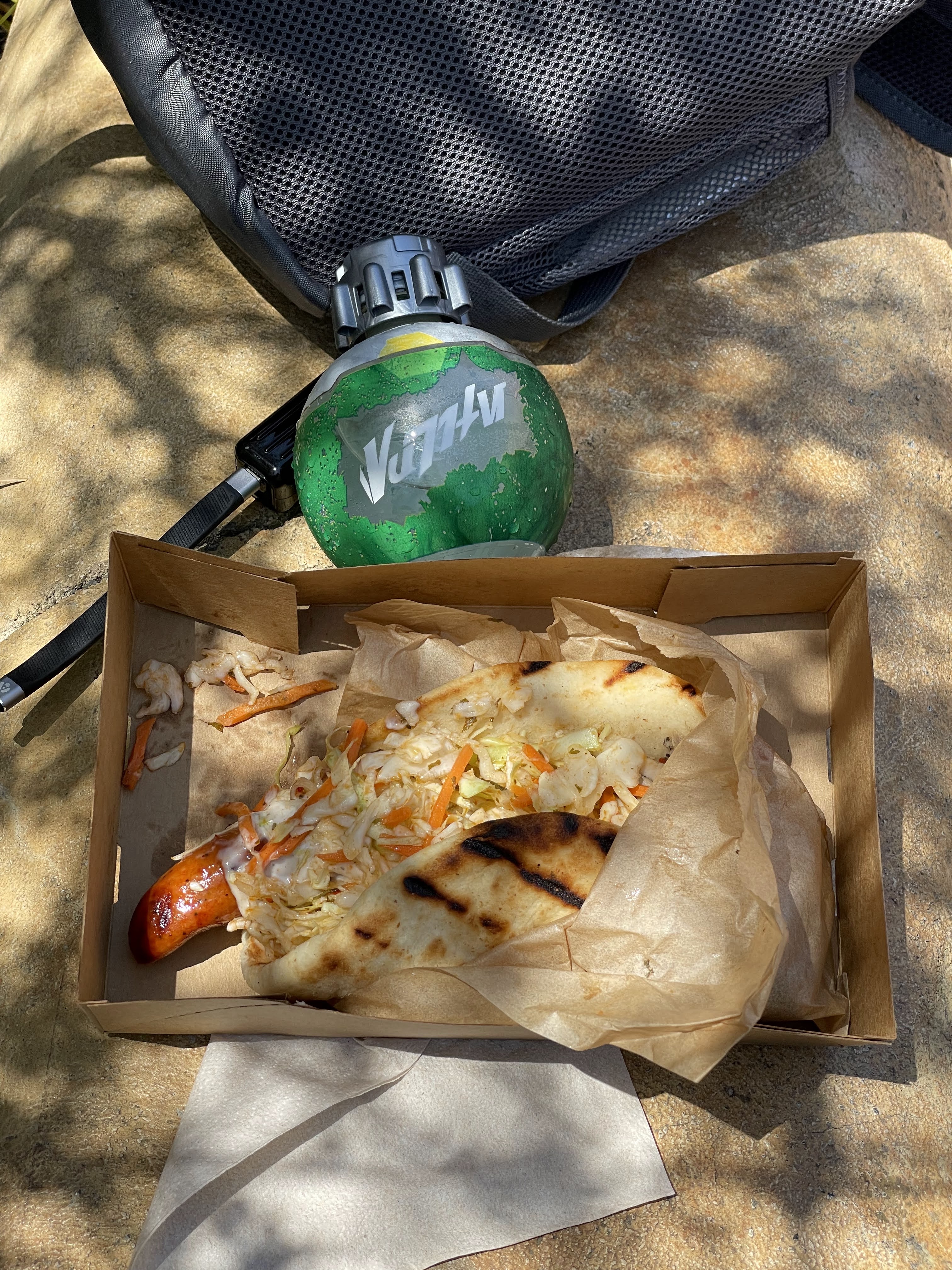
Figure 3. A limited-edition Sprite can designed as a thermal detonator for Galaxy’s Edge and a Ronto Wrap. Photo courtesy of Cyrus R. K. Patell.
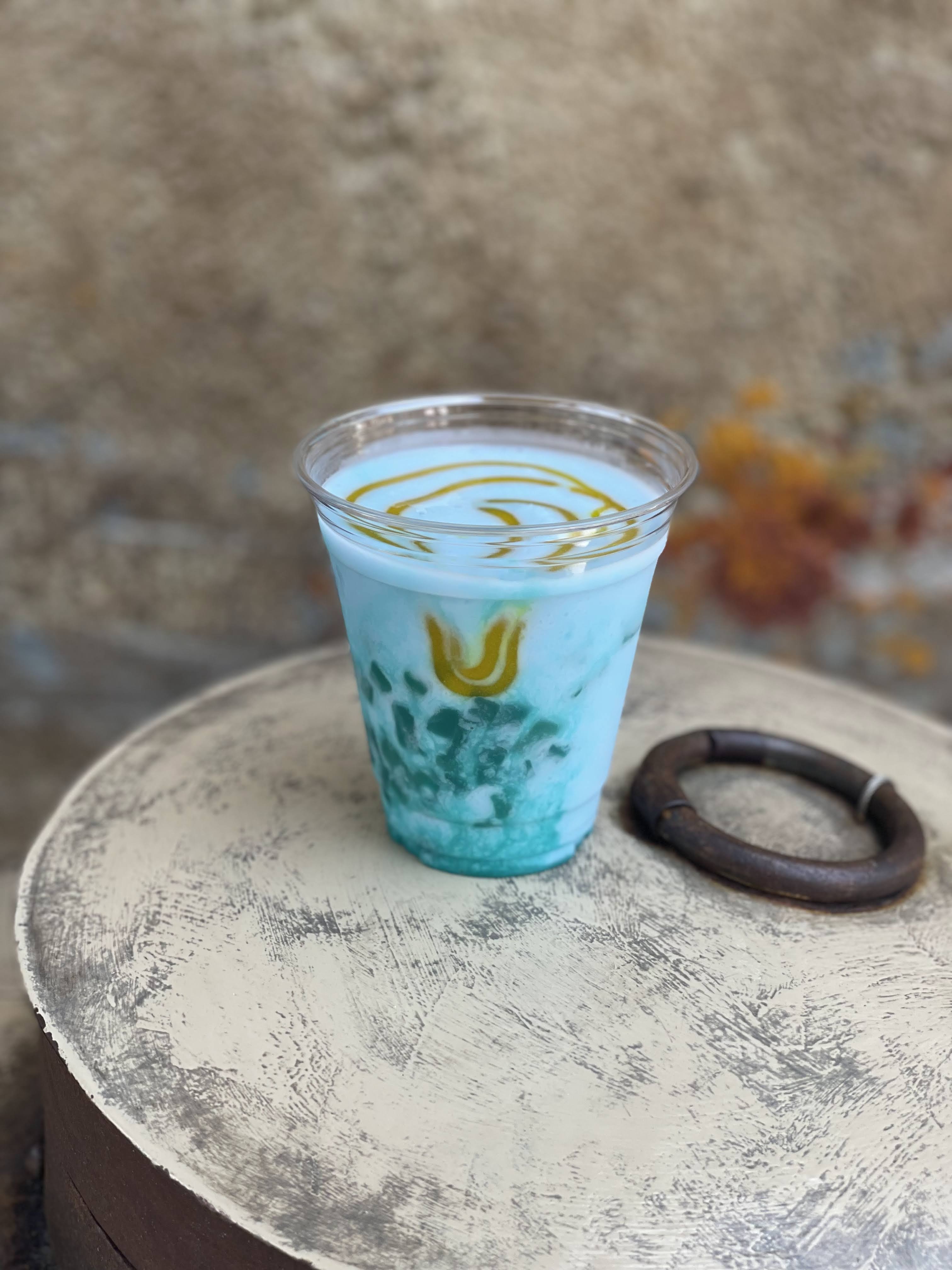
Figure 4. The Blue Milk Mon Cala Swirl seasonal drink with glittery mango gel and sour jellies. Photo courtesy of Cyrus R. K. Patell.
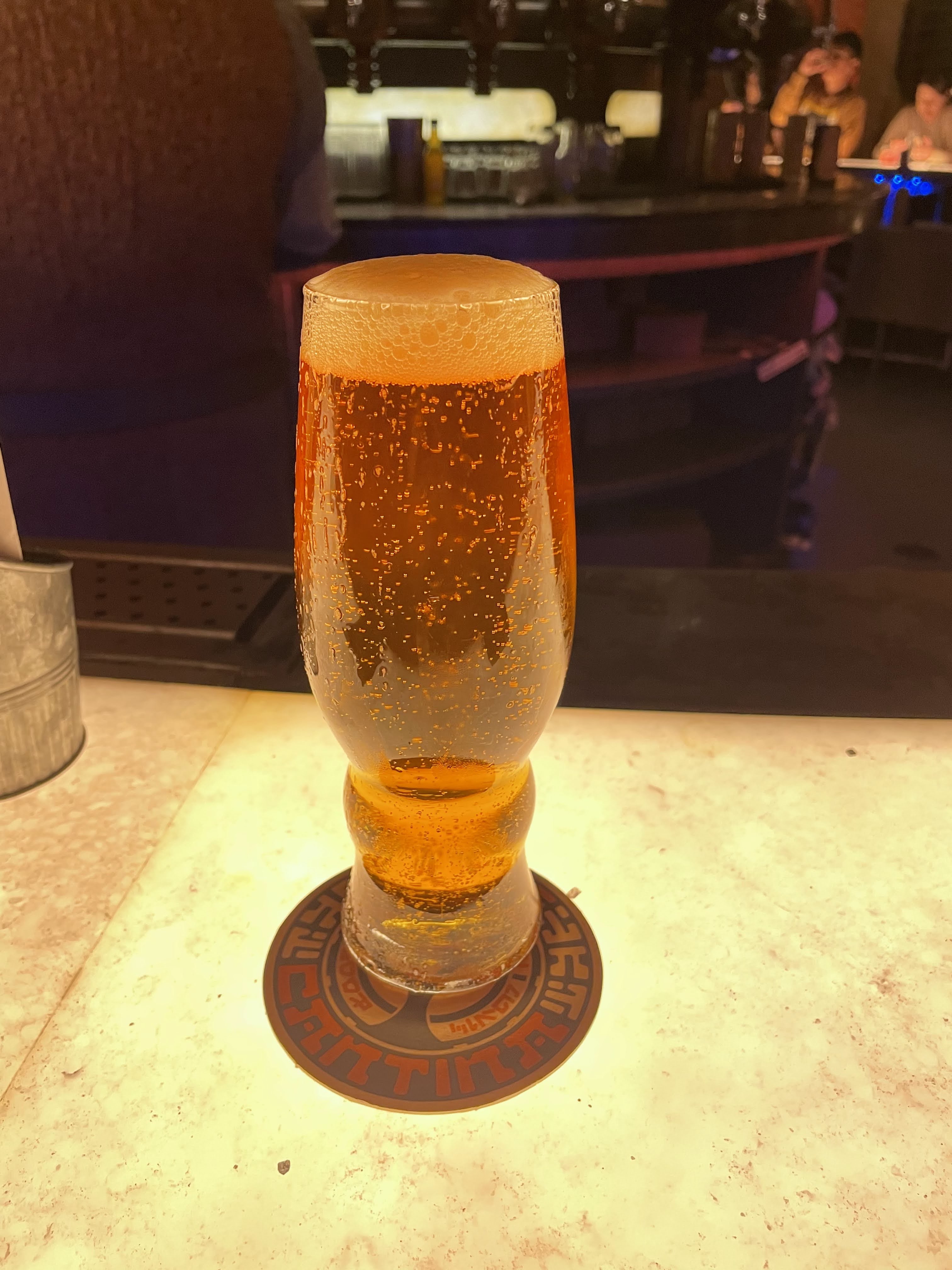
Figure 5. The Bespin Fizz cocktail from Oga’s Cantina. Photo courtesy of Cyrus R. K. Patell.
[1.4] Food as an effective world-building device at Galaxy's Edge illustrates the cultural resonances of eating. In their introduction to Eating Fandom: Intersections Between Fans and Food Cultures, the editors note that "food matters…not just for health" and that "food exists at the intersection of biological sustenance, physical goods, and sociocultural meanings" (Reinhard, Largent, and Chin 2021, 1–3). They observe that consuming fan food, like butterbeer from Harry Potter or lembas from Lord of the Rings, allows the fan to develop a substantial, "intimate relationship" with worlds that are ultimately unvisitable (14). In Galaxy's Edge, fans eat not only to refuel after a long day of rides but also because they expect an authentic Star Wars experience worth paying high prices for. Meredith E. Abarca reads food as "refer[ing] to a material item, a performative action, a symbol and/or metaphor" (2021, 16). In other words, not only does Galaxy's Edge food appear as a simulacra of science fiction reality, but eating as a performative action shows how the visitor to Galaxy's Edge becomes an actor in the Star Wars saga. Fans may believe they are performing the day-to-day life of a Star Wars character like Luke Skywalker when they chug blue milk or imagine themselves as Han Solo when they order an alcoholic drink at Oga's Cantina. The idea of live action role-playing (LARPing) through consumption is further explored by the luxury hotel Star Wars: Galactic Starcruiser (https://www.disneyworld.co.uk/destinations/star-wars-galactic-starcruiser/), which opened near Disney's Hollywood Studios in March 2022. Concept art shows guests in Star Wars costumes sampling exotic galactic cuisine in the Crown of Corellia Dining Room and sipping cocktails in the Sublight Lounge while socializing with characters. Guests' choices in these glamorous culinary spaces determine how the drama on board unfolds. The Galactic Starcruiser website (https://www.disneydining.com/here-are-all-the-new-experiences-coming-to-disney-parks-this-year-bb1/) sums up the hotel experience as "part live immersive theater, part themed environment, part culinary extravaganza, part real-life role-playing game" (italics mine). The "culinary extravaganza" scales up the haptic, personalizable experiences at Galaxy's Edge and plays a prominent role in facilitating immersion in the Star Wars narrative.
[1.5] We can push this concept of food as narrative and embodied text further with the critical term "eatymologies." Rebecca Williams borrows the term "eatymologies" from food historian Fabio Parasecoli, who himself coopted the neologism from Salman Rushdie to explain how food has a history like words do (2008, 134). Parasecoli's eatymologies examine the development of a particular food product over time, unpacking its ingredients, cooking techniques, and confluence of local/global flavors to describe food as narratives of origin, diffusion, and hybridization. Inspired by Parasecoli's emphasis on food spaces in popular culture, Williams's research shows how theme park food is a form of "place-based and situated fan engagement" that informs visitors' affective relationships with certain menu items only available at Disney Parks (2021, 149–50). Like Williams, I adopt eatymologies to think about the environment of the theme park, albeit with more ecocritical aims: the term allows us to see food as consumable narratives rooting fantasy settings with a "sense of place" while simultaneously expressing our "sense of the planet" (Heise 2008). Since the food and drink at Galaxy's Edge is designed to be "out of this world" science-fiction fare, what do the theme park menus reveal about our current ways of being in the world? After all, philosophers Dean W. Curtin and Lisa M. Heldke write that the earthy process of food production and food in general "centers our subjectivity as a relational being by underscoring our interdependence to others (both humans and animals) and to nature" (quoted in Abarca 2021, 17). Food grounds us in the materiality of the human body and our environments. Thinking about the eatymologies of Galaxy's Edge not only suggests etymologies but also epistemologies. If we consider recent scientific studies showing that the stomach is the body's second brain, what gut knowledge can we gather about food at Galaxy's Edge? Recognizing the narrative potential of things like food, a "text" that does not fit neatly in the bounds of human language, is particularly important given that the climate crisis is what Amitav Ghosh calls "a crisis of culture…and imagination" failing to represent the vitality of the nonhuman planet (2016, 9). Eatymologies reveal the vibrant stories of the nonhuman and how we consume places and spaces (figure 6).
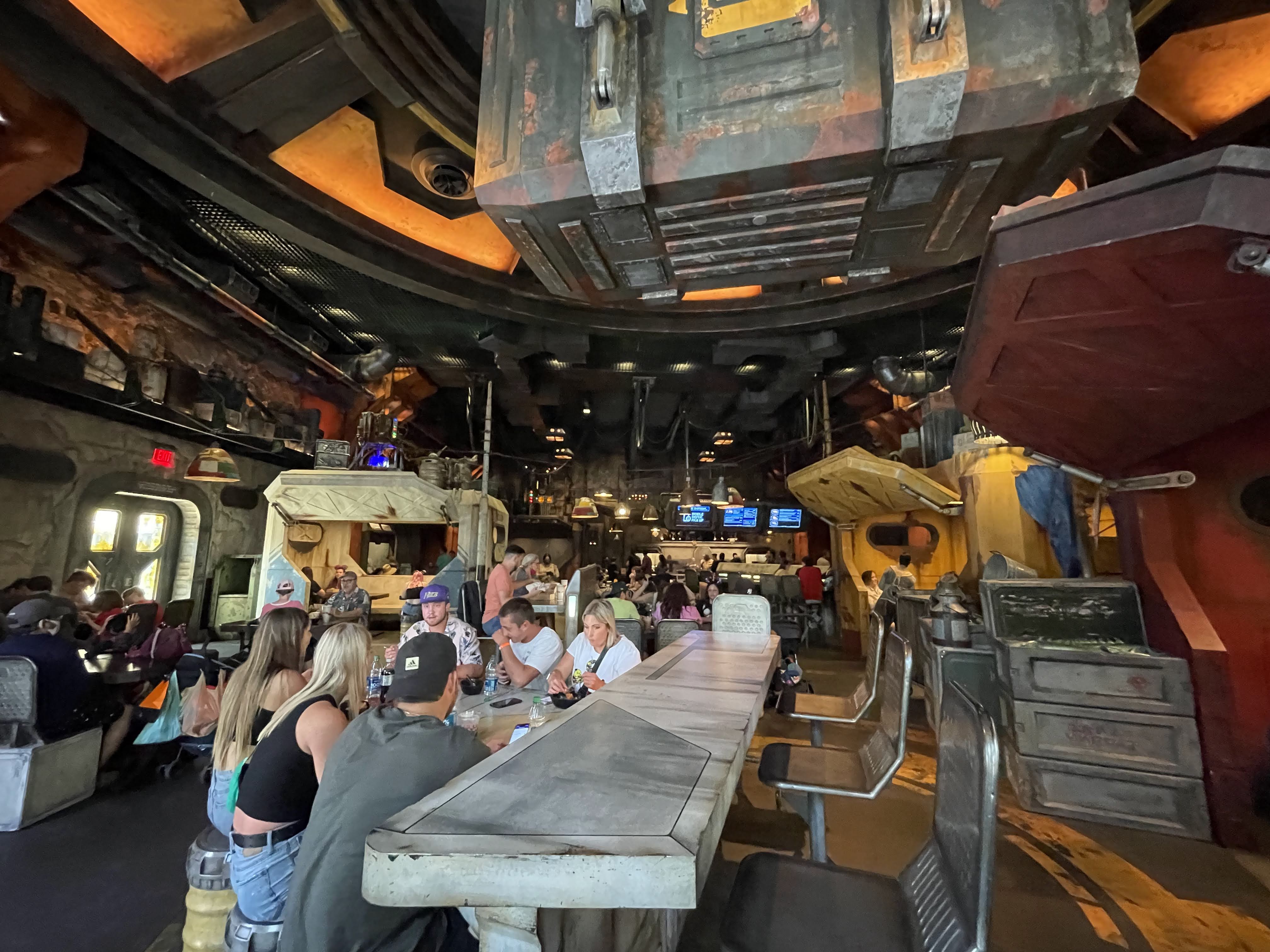
Figure 6. Visitors dine at Docking Bay 7 Food and Cargo, an eatery designed to look like a fully functional hanger bay. Photo courtesy of Cyrus R. K. Patell.
[1.6] The speculative menus at Galaxy's Edge imagine alternative earthly eating practices. What's on the table in the theme park reveals contemporary modes of consumption. As Pascual Soler deftly states, "Eating is, by definition, a deadly act" (quoted in Abarca 2021, 17). The act of ingestion, in many parts of the world, involves the killing of animals; likewise, the food in fictional Batuu performs stories about which animals we consider expendable, from the Tatooinian ronto in the Ronto Wrap to the Nabooian kaadus in Smoked Kaadu Ribs. At the same time, we would be horrified to see fried Wookiee legs or roasted Baby Yoda heads on a plate, even if they are just as strange in appearance as the rontos and kaadus. As Melanie Joy explains in her book, Why We Love Dogs, Eat Pigs, and Wear Cows: An Introduction to Carnism, the invisible belief system of carnism psychologically severs the word "meat" from the concept of "corpse," obliterating the potential to recognize animals as beings beyond livestock (2011, 17–21). In the theme park, certain sentient beings are fawned over as pets (such as the adorable bird porgs) while others like shaak, bulbous herd animals, are marked for slaughter as meat. Galaxy's Edge recipes play a fascinating role as they must further exoticize meats, such as chicken breasts or beef jerky, into an exotic, extraterrestrial mystery meat. For example, Fried Endorian Tip-Yip serves chicken as a perfectly uniform square cutlet and Nuna Turkey Jerkey features scaly-patterned dehydrated turkey. These food plating techniques defamiliarize mundane meat. The projection of an alien animal creates an unwitting effect: for a moment, the meat-eating consumer is forced to imagine the flesh of a dead animal, albeit a fictional animal. While the visitor may be relieved once they bite into the meatloaf and experience the familiar taste of poultry, the moment of unknowing temporarily prompts the diner to sit with the discomfort of the fleshiness of the imagined animal. On the other hand, the actual, real-life chicken used in, say, Fried Endorian Tip-Yip is further metaphorized, removed, and erased by the dressings of its flesh as tip-yip meat. In contrast, the vegetarian and vegan offerings at Galaxy's Edge, such as the Felucian Kefta & Hummus Garden Spread, Ithorian Garden Loaf, and the Ronto-Less Garden Wrap adapt plant-based meat substitutes and encourage an intimate connection with holistic planetary ecology with their mix of ingredients. For example, the popular Felucian Garden Spread is inspired by the fungal forest planet of Felucia, and the kid's meal Takodana Veggie Dippers includes "edible soil with nuts" (https://disneyworld.disney.go.com/dining/hollywood-studios/docking-bay-7-food-and-cargo/menus/). Fictional dishes at Galaxy's Edge reveal how we eat the Earth, how nonhuman life is processed, subsumed, and masticated by humans.
[1.7] These projections of creatureliness and animal life in the food and drink are not too much of a stretch, given the habit of Disney Imagineers to place audio-animatronics around the parks to enhance the sense that guests are visiting another world with its own ecosystems. "Audio-animatronics" is Disneyspeak for highly articulated "electronic actors," stunningly lifelike robots such as the Yeti from the Matterhorn Bobsleds rollercoaster, the Hitchhiker Ghosts at the Haunted Mansion, or the Captain Jack Sparrow figures at the Pirates of the Caribbean ride ("Birds, Beasts, and Beauty"). At Galaxy's Edge, Imagineers debuted animatronic droids like BB-8, along with aliens like Nien Nunb, Dok-Ondar, Lieutenant Bek, and Hondo Ohnaka for the various rides and shops (MacDonald 2019). Notably, the Creature Stall (https://disneyworld.disney.go.com/shops/hollywood-studios/creature-stall/), the one-stop shop for toys of Star Wars animals, features vivid, naturalistic animatronics such as a sleeping Loth Cat and flickering Felucian Fireflies. The Creature Stall, which stocks Wampa toys, Tauntaun plushies, and battery-powered Kowakian Monkey-Lizards, is framed in-universe as an "exotic shop" where you'll "discover the galaxy's rarest species" in the hanging cages and crates. All animal merchandise comes with tags detailing the creature's species name, home planet, animal type, and diet, as if the animals are live specimens to be adopted and cared for. Dok-Ondar's Den of Antiquities also prominently displays skeletons of winged creatures, taxidermied Tauntauns (figure 7), and cephalopods in glass cylinders like a zoo (MacDonald 2019). These depictions of the wildlife trade are not just limited to merchandising but are also referenced in the décor of the eateries: the tanks floating above the bar in Oga's Cantina feature swamp slugs from Dagobah, Mynock bats, and a frog-like Worrt creature who sticks out its purple prehensile tongue and lays tapioca pearl "eggs" (figure 8) (Porter 2019). The Galaxy's Edge visitor is surrounded with representations of animals fit for consumption.
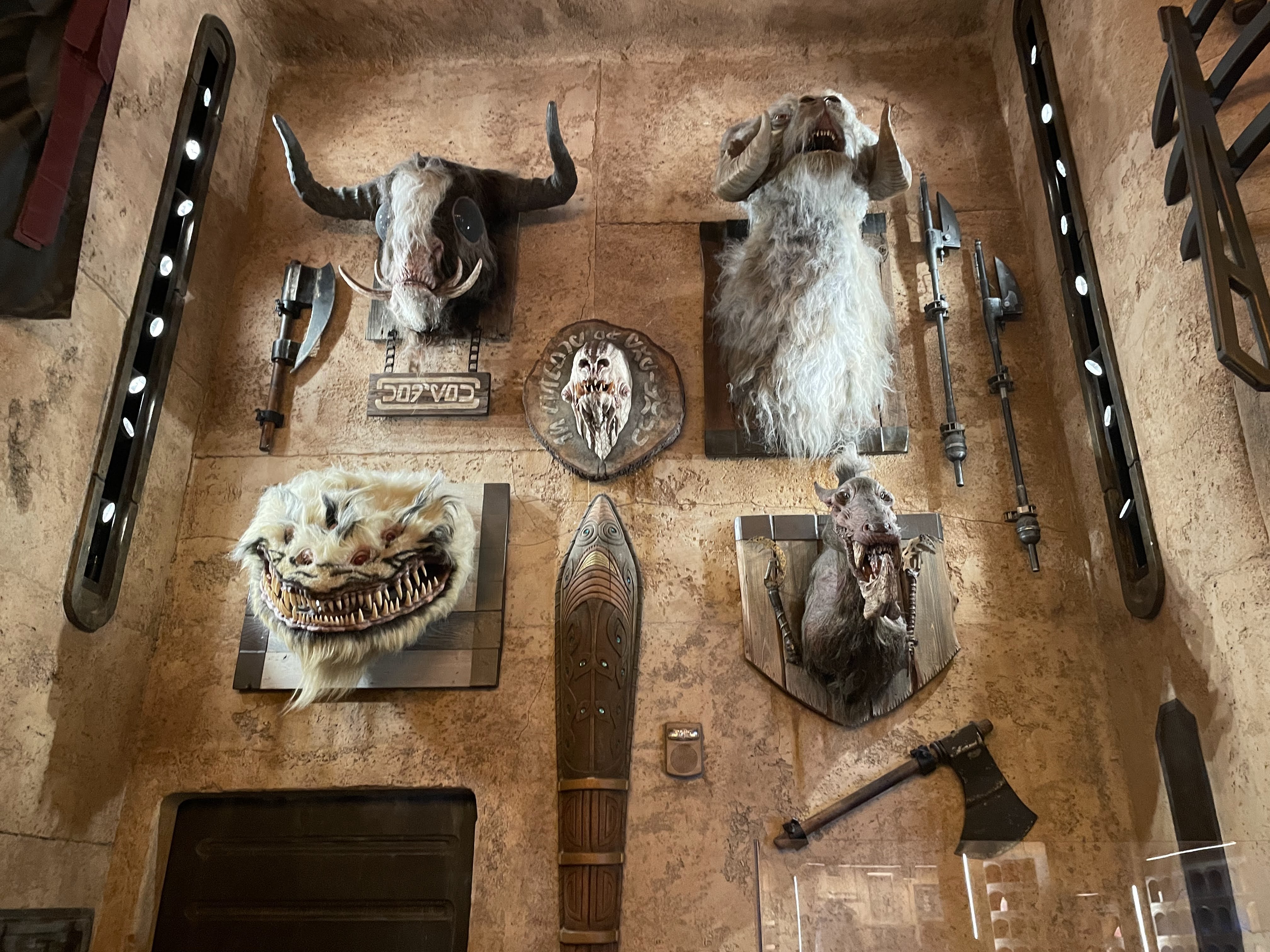
Figure 7. A wall of taxidermied creatures in Dok-Ondar’s Den of Antiquities, including the bust of a Tauntaun on the top right. Photo courtesy of Cyrus R. K. Patell.
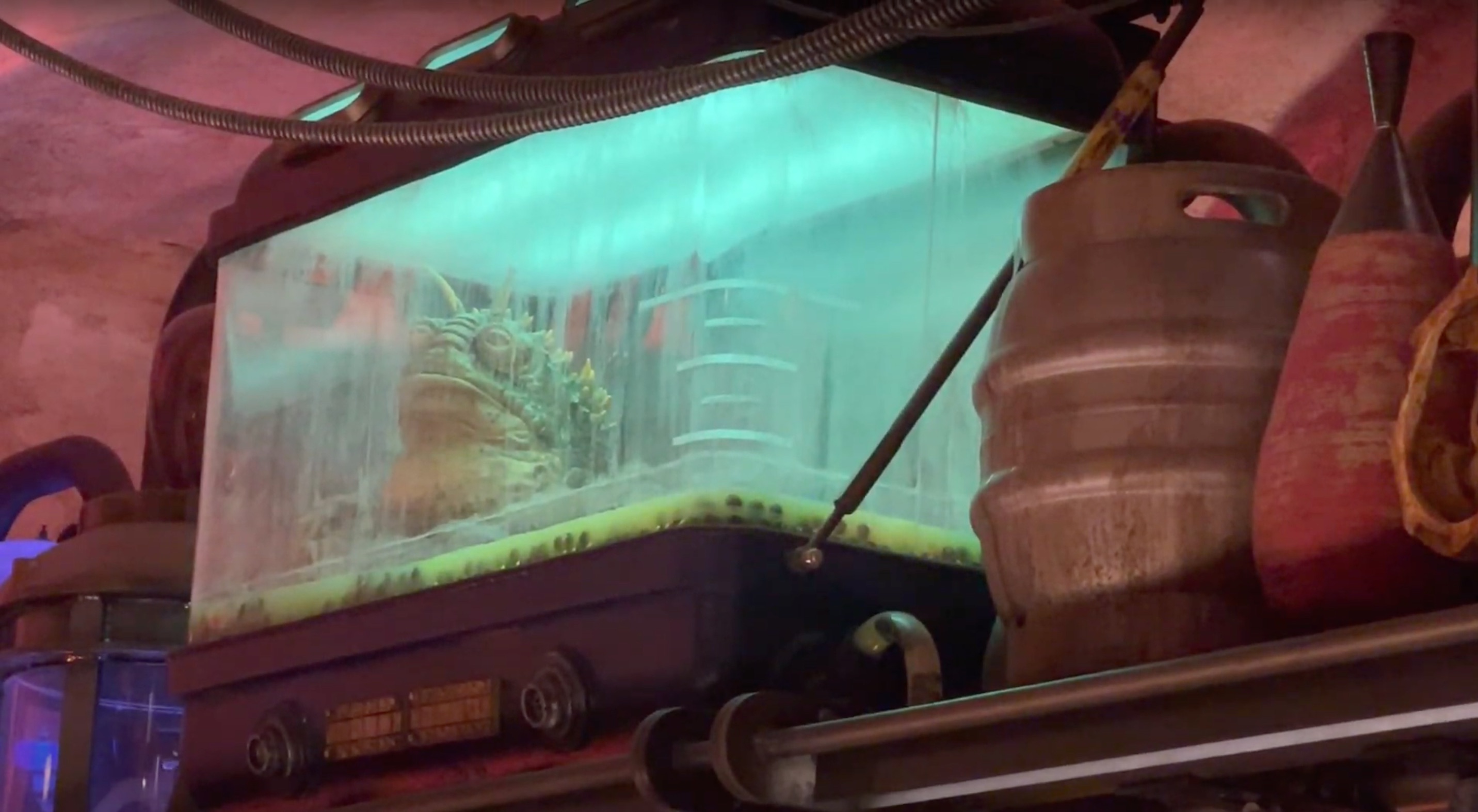
Figure 8. A Worrt sits in its aquarium on top of the bar counter at Oga’s Cantina. Photo courtesy of Cyrus R. K. Patell.
[1.8] Through menu descriptions and hyperrealistic special effects, the Galaxy's Edge animal undergoes what Jennifer A. Kokai would call the "Nemofication" of nature. Kokai explains this phenomenon as "the diminishment of live nonhuman creatures in attractions in favor of more easily controlled and anthropomorphized, or humanlike, animals" and the reduction of complex "nature" to simplistic sources of entertainment and amusement (2019, 88). Kokai describes the Nemofication effect at play even in the "entirely invented flora and fauna" of the Na'vi River Journey, an attraction located in Disney's Animal Kingdom park based on James Cameron's 2009 Avatar film (2019, 88). The imagined environment for the dark ride emphasizes "plants and animals as anthropomorphized and domesticated" and creates an ultimately "artificial environment" of the natural world "that meet[s] all the imaginative hopes and dreams of their guests"—a dangerous wish that results in "no actual animal…ever [being able to] compete for attention or resources" (2019, 89). Keeping in line with this magical view of the nonhuman world, Satu'li Canteen (https://disneyworld.disney.go.com/dining/animal-kingdom/satuli-canteen/), the themed restaurant of Pandora: The World of Avatar, offers hearty grain bowls based on "Pandora's natural abundance" with fanciful proteins like teylu (a kind of jumbo shrimp) for ecotourists visiting Pandora's floating mountains. Like the fictional organisms of Pandora, we can track the Nemofication effect with the fantastic, fake creatures populating Batuu. One of the most iconic animals at the theme park are the porgs, cute, chirping sea-dwelling birds who crop up in various transmedia iterations of Galaxy's Edge. Porgs first appeared in The Last Jedi (2017), with Chewbacca roasting porgs on a spitfire before his encounter with an endearing porg family convinced the Wookie not to eat them. From the beginning, porgs symbolize the boundary between pets and meat. In the theme park, porgs are sold as talking plush puppets in the Creature Stall and as souvenir mugs with the Cliff Dweller drink at Oga's Cantina. Porgs are maximized for our aesthetic consumption. We project our human perspective so thoroughly onto the birds that a curious porg serves as a stand-in for the parkgoer in the episode "Black Spire Outpost" for the children's microseries Star Wars Galaxy of Adventures (2018). The porg even follows the wafting aroma of roasting meat to Ronto's Roasters, staring longingly at the charred and spiced rontos even though it could very well be porg meat on the spitfire (figure 9).
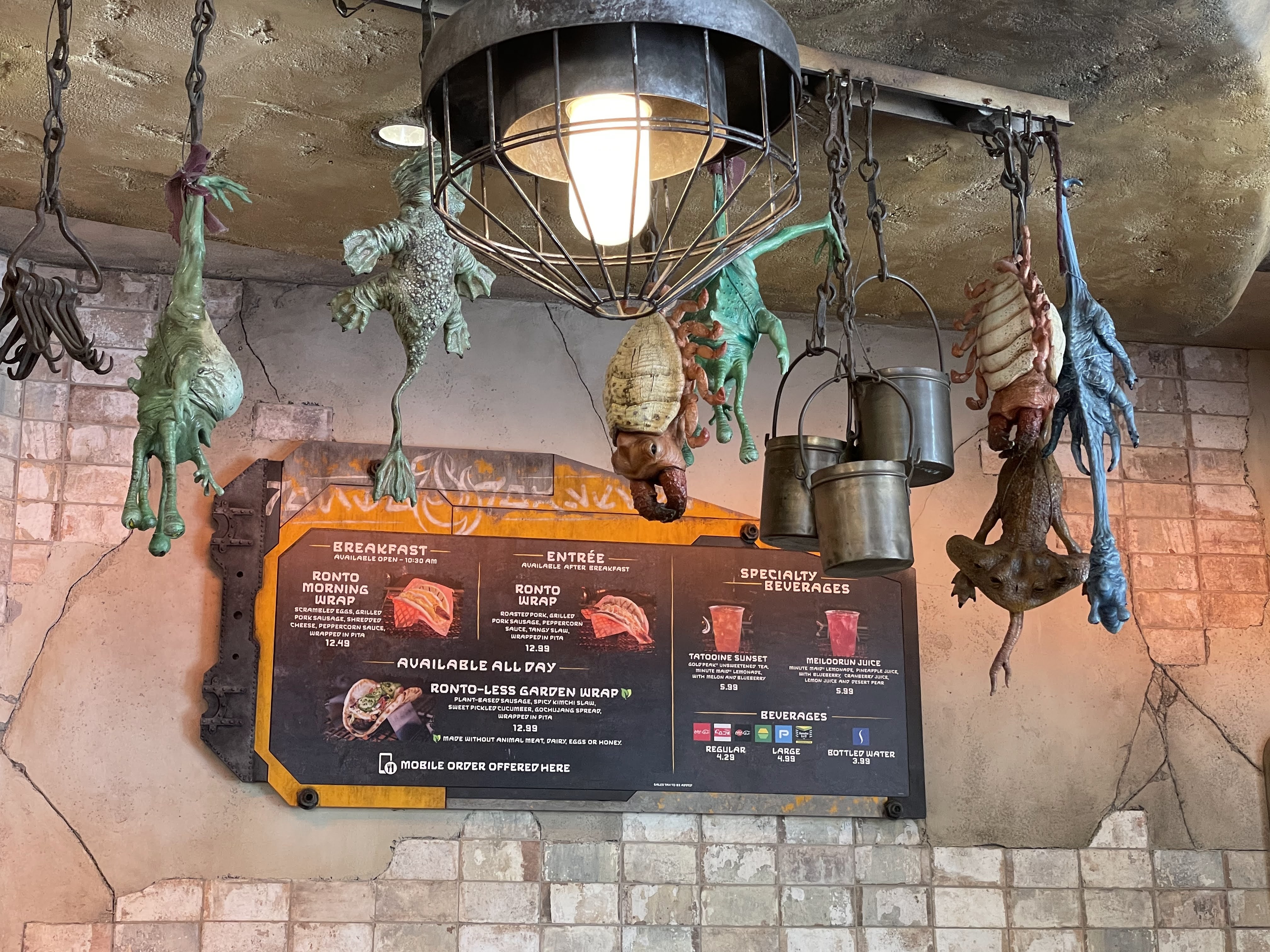
Figure 9. Plastic carcasses of exotic animals hang from the ceiling of Ronto’s Roasters. Photo courtesy of Cyrus R. K. Patell.
[1.9] I bring the presumably nonedible decor elements of Disneyland into the fold of this culinary discussion to think about how food is imbricated in the environment through theme park eatymologies. Black Spire Outpost takes its name from the spires, darkened tree stumps surrounding the marketplace (figure 10). Lucasfilm vice president and executive creative director Doug Chiang was inspired by the petrified forests of Arizona and vastly expanded the height of the trees to thousands of feet, imagining Batuu as a petrified planet spanning eons of history (Ratcliffe 2021, 18). In Delilah S. Dawson's novel Galaxy's Edge: Black Spire, Resistance spy Vi Moradi crash-lands on Batuu and sets up a secret base in the cavernous ruins outside Black Spire Outpost. The landscape of the lawless world worms its way into the food—The Official Black Spire Outpost Cookbook includes Golden Lichen Tuile, a delicate wafer baked with gold dust from the spires, a highly lucrative spice controlled by crime boss Oga Garra (Monroe-Cassel and Sumerak 2019, 37). The Traveler's Guide to Batuu also catalogs several agricultural towns on the planet such as the Surabat River Valley and Peka Community that supply Black Spire Outpost with ingredients. Like the farmboy Dolin in Dawson's novel, another main character of the Star Wars: Galaxy's Edge young adult novel A Crash of Fate, Jules, is born into a family of farmers on Batuu (Córdova 2019, prologue). The physical characteristics of Black Spire Outpost as a "once thriving stop for traders and travelers" with "lush forests and majestic mountain regions" feed into the gustatory landscape of Galaxy's Edge, which attempts to conjure up food on the margins with plenty of intergalactic flavors and fresh, local produce ("Batuu"). The environmental design of Batuu's space port and its native and imported flora and fauna underscore Black Spire Outpost as a site not only of cosmopolitanism but also of biodiversity. The menus at Galaxy's Edge negotiate the role of the human as consumer in a galaxy of thousands of sentient species.
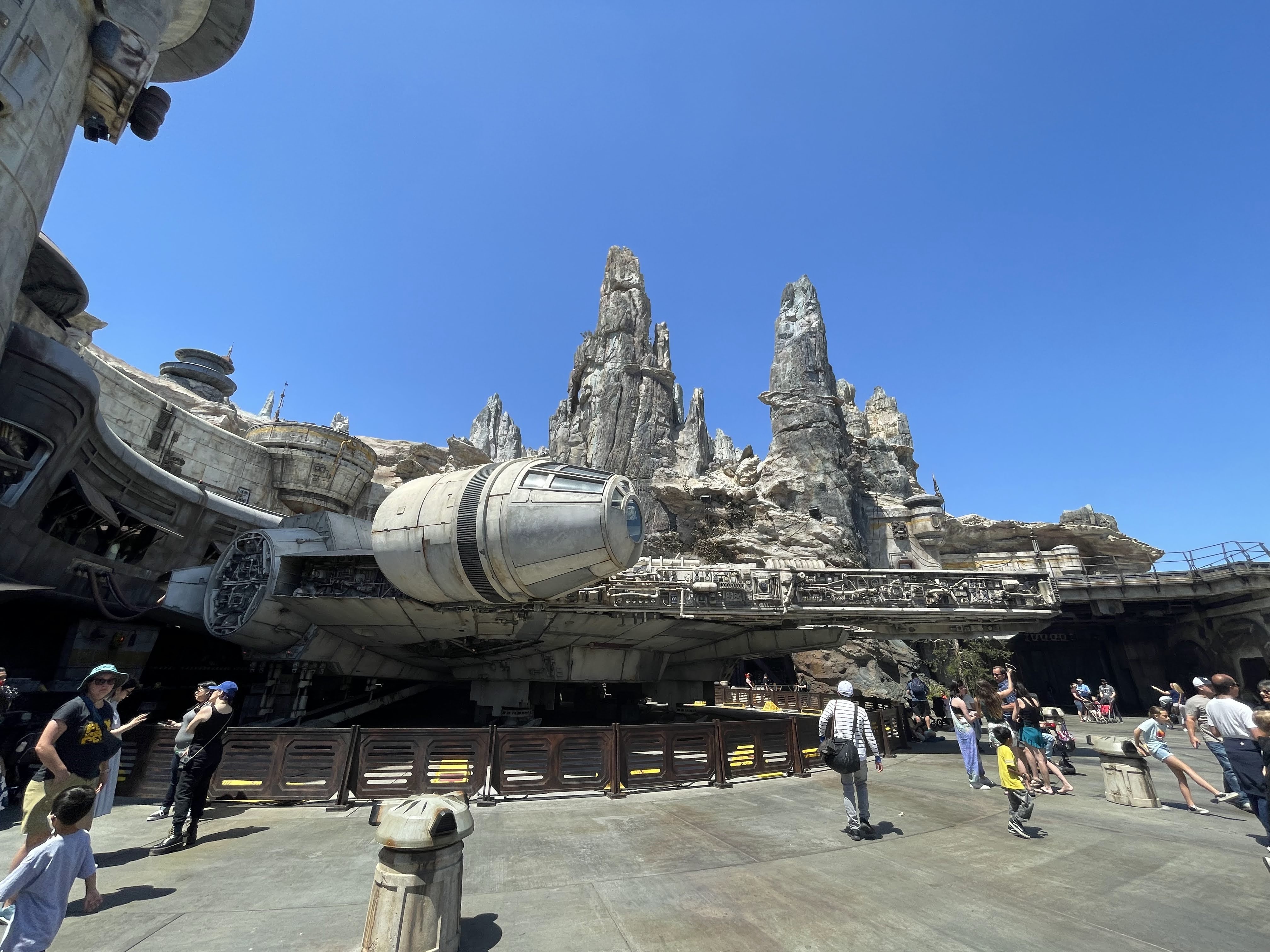
Figure 10. The stone spires surrounding the spaceport, framed against the Millennium Falcon. Photo courtesy of Cyrus R. K. Patell.
2. "May the farm be with you": Film representations of food and ecology
[2.1] So far, I have argued that the eatymologies at Galaxy's Edge prime us to reimagine food as an edible text negotiating the place of the human body in the larger multispecies world. In this section, I argue that what the theme park is doing is not new but rather a more solid embodiment of how alimentary symbolism throughout the Star Wars transmedia franchise has always latently referenced environmental issues. Over the next few paragraphs, I revisit key eating scenes in Star Wars screen media, mostly focusing on the trilogy films, to explore how they communicate the problems of sustaining oneself amidst the devastation of the Empire. While it may seem odd to focus on mealtimes in a saga of lightsaber battles and space dogfights, sometimes the most banal scenes in Star Wars capture the galactic scales of the fight between the Empire/First Order and the Rebellion/Resistance. Food production is in the background of one of the first war crimes we see on screen: the burning of the Lars homestead and the murder of moisture farmers Owen and Beru Lars. The day-to-day experiences replicated by Galaxy's Edge, such as drinking at the local cantina under the watchful eye of Imperial spies and Rebel fighters, show how the epic battles of Star Wars boil down to the everyday politics of consumption.
[2.2] Galaxy's Edge capitalizing the opportunity to drink the blue milk that Luke Skywalker drank foregrounds Luke's affinity with his environment in the Skywalker Saga. After all, Luke Skywalker started out as a moisture farmer on his uncle's homestead. Luke's uncle, Owen Lars, procures protocol droid C-3PO from the Jawas not because he needs a diplomatic translator but because he needs a droid that can work with "the binary language of moisture vaporators." At the beginning of A New Hope (1977), Luke wants to fly starships at the Imperial Academy, but he's stuck planetside to help out on the farm. The famed blue milk appears on the Lars's dining table during a tense family meal. Luke, Aunt Beru, and Uncle Owen intermittently drink opaque glasses of the extraterrestrial beverage as Luke questions the family's agreement for Luke to stay on another season. After Luke storms out, frustrated that his uncle has grounded him, the film cuts to the iconic landscape shot of Tatooine's twin suns. Luke surveys the arid plains and the celestial objects beyond his reach as the bright brass fanfare of John Williams's "Binary Sunset Theme," the leitmotif for the Force, begins to play. Alan Dean Foster's novelization spins the scene as a meditation on Luke's thoughts as a moisture farmer. Luke hopes that, "soon, for the first time, those sands would blossom with food plants…the former wasteland would see an eruption of green" (quoted in Juerjens 2020, 16). Later, when C-3PO asks how he can help Luke, Luke wryly replies, "Not unless you can alter time, speed up the harvest, or teleport me off this rock." Luke's distaste for the Tatooine desert and the stifling labor of moisture farming, expressed in the blue milk scene, underscores how Luke is bound by his environments. In sum, Luke's journey to the stars is dictated by his relationship with the earth.
[2.3] In The Last Jedi (2017), an older Luke returns to the earthy processes of dairy production while grappling with the complicated legacy of the Jedi. During Luke's self-imposed exile on the watery island planet of Ahch-To, Luke milks the thala-siren, native marine mammals, to harvest his own nutritious green milk. Luke has retreated to a remote corner of the galaxy to essentially let the Jedi Order go extinct after his nephew Ben Solo/Kylo Ren turns to the Dark Side. As Luke moves away from his heroic role as a Jedi Master, he embraces what he knows from his tough upbringing on Tatooine: moisture farming. When Rey finds him at last on Ahch-To, hoping to train under him, she's disappointed by Luke's tedious, run-of-the-mill routines. Rey is aghast when she finds out that he's closed himself off to the Force, the all-encompassing energy field that connects all beings in the Star Wars universe, but Luke's agricultural practices show how he is tapped into his world. While being a farmer may seem vastly different from being a Jedi on the surface, the two vocations are more similar than one would think. From blue milk to green milk, these iconic beverages show how Luke is subsumed and gradually becomes one with his environments.
[2.4] Food and the Force are interlinked in the figure of Luke as farmer-Jedi. The riffs on "May the Force be with you" such as "May the farm be with you" or "May the fork be with you" (often found on fan-made or official licensed kitchenware) hint at how food operates like the Force, the energy connecting all beings. The Jedi and farmers share a common respect for ecology that allows them to see how organisms interact. In Leah Steur's description of fictional food recreations as a form of mimesis and ekphrasis, she writes, "it [fan food] is an act of translation…this mode of fandom requires the fan's capacity to transmute fiction into reality, idea into material thing, mouthwatering film frame or written passage into steaming entrée" (2021, 164–66). Furthermore, Will Brooker states that fan food creates "a physical, earthly focus for something greater and intangible" (quoted in Steur 2021, 167). Both Steur and Brooker suggest that fictional food recreations amalgamate both the mythic and material. Food and the Force are alike in that both transcend the mere fact of physical matter, becoming symbolic of expansive, complex, global systems where everyone is connected with everything.
[2.5] Reading Steur's and Brooker's writings on the properties of transfiguration apparent in fan food, one is reminded of Yoda's maxim from Return of the Jedi (1983): "Luminous beings are we, not this crude matter." Yoda says this to a young Luke in the swampy marshlands of Dagobah when explaining how the Force "surrounds us, binds us," "flowing around you…between you, me, the tree, the rock, yes, even between the land and the ship." Food is part of this energy field, and Yoda understands this well: before he agrees to take Luke on as his apprentice, he invites Luke into his hut, where he is cooking rootleaf stew, a pungent mixture of swamp weed and other plants from the bogs. He tells Luke, "Patience! For the Jedi it is time to eat as well," before revealing his true identity as the Jedi that Luke is searching for. Similar to how Luke is introduced as a farmer before his becoming a Jedi, Yoda is positioned as a peculiar cook before his past life as a warrior is uncovered. While the two slurp rootleaf stew at Yoda’s home, Yoda communes with the Force ghost of Obi-Wan Kenobi, who persuades him to teach Luke. The scene exemplifies what Stacy Alaimo would call "transcorporeality," or the enmeshment of the body within the environment that undoes the division of the human from the natural world (Kuznetski and Alaimo 2020, 139–40). Alaimo's ideas about transcorporeality emphasize how we are "all interconnected across vast distances" and serve as the ideal descriptor of how both food and the Force operate in this moment in Yoda's hut (Kuznetski and Alaimo 2020, 139). The rootleaf stew is the palpable manifestation of how Yoda relies on the world around him for nourishment, and the dinner with the dead Jedi shows how the speculative conventions of Star Wars can transcend even death, the most antithetical human experience.
[2.6] Food represents not only embodied transmedia but also transcorporeal transmedia. Transcorporeality helps us better see how "we are always already the very substance and the stuff of the world that we are changing"; likewise, Star Wars food shows us that we are embedded in hypermediated environments (Kuznetski and Alaimo 2020, 139). Characters in Star Wars are what they eat; the rootleaf stew as a hearty mix of "foraged yarum seeds, galla seeds, and scavenged sohli bark" emphasizes how Yoda is, on a gut level, one with the local flora and fauna (Fujikawa 2017). Yoda ekes out a living by subsisting on the wetlands, much like how Rey, the protagonist for the sequel trilogy, literally survives on the trash around her as a scavenger girl on the desert planet Jakku. To survive, Rey must salvage parts of defunct Imperial and Resistance spacecraft in exchange for meager military rations; one back-busting day of scavenging only grants her one quarter-portion pack. Perhaps the most affective three or four seconds of Rey's introductory sequence, Rey mixes polystarch powder from the rations with a paltry amount of pure water—a luxury on Jakku—to create a small, self-raising green loaf that she devours with veg-meat. Fans and critics took to Twitter after the release of The Force Awakens (2015) to praise the bread-making moment as a brilliant manifestation of Rey's forced self-sufficiency, her loneliness, and her hunger for a better life (McNally 2016; Dodd 2016). Sitting outside in the sand to eat her modest meal amongst monumental junk, Rey's identity as a scavenger is most apparent in her malnourishment and her hunger. The first appearances of Rey as a scavenger, Yoda as a cook, and Luke as a farmer emphasize how these heroes are rooted and one with their physical environments.
3. Recreating Rey's portion bread and Luke's blue/green milk: Creative consumption and material fan practices
[3.1] If the eatymologies of Galaxy's Edge present food as edible texts and transcorporeality in Star Wars transmedia shows how food is enmeshed with the environment, fan food recreations embody the narratives that we choose to ingest and imbibe. Although studying multibillion-dollar media franchises may seem contradictory with environmental critiques of consumerism, audiences' consumption of far-reaching storyworlds like Star Wars are diverse and varied. In this section, I look at official Galaxy's Edge recipes and fan recipes of Star Wars food to posit that fan practices reconstitute the Star Wars story. Fans do not perform "rote homage" but "engage in the sensation of taste to meet characters and worlds within their own bodies" (Steur 2021, 163). Even if fans are eating official Star Wars food products at Galaxy's Edge, the intimate act of taking in and processing food gives rise to new meanings beyond the regurgitation of licensed stories; in other words, food as merchandise does not preclude food as text. While there are certainly "power differentials" in the affective labor of fan-consumers at Disneyland (Williams 2021, 162), Leah Steur reminds us that fans are not passive consumers brainwashed by corporations like Disney, stereotypes that pioneering fan studies scholars like Henry Jenkins fought against (2021, 164). We should keep in mind the spectrum from "consumptive affirmational fandom to productive transformative fandom" and the ways in which food slides on this scale, with fans as "immersive performers" and not just spectators (Steur 2021, 167). Similarly, Victoria Godwin describes the fan-visitor to Universal Orlando's Wizarding World of Harry Potter as a skillful navigator of "corporate-created and -controlled theme parks," finding that "fans often use merchandise as additional interfaces to participate actively and to facilitate immersion" on their own terms (2017). Rebecca Williams further distinguishes between Star Wars fans who may not be as interested in Disneyland and Disneyland fans who may not be as interested in Star Wars, noting that visitors to Disney's parks resist the one-size-fits-all model and often "display remarkable reflexivity" about their fandom (2019, 137–38). Discussing the official Star Wars: Galaxy's Edge cookbook, Williams writes that the cookbook allows fans not only to visit "the fictional 'world' of Batuu" but also to visit "the theme park space that spatially brings it to life" (2020, 157). In other words, fans are discerning tasters and creative consumers engaging with both the Star Wars property and the spaces that Star Wars appears in (Williams 2019, 137).
[3.2] This spectrum from "consumptive affirmational fandom to productive transformative fandom" is evident in the vast array of Star Wars culinary fan practices. We can bring these concepts of intertextuality, performance, and immersion together by examining official and fan recipes for Rey's portion bread. The official Star Wars blog recipe by Jenn Fujikawa addresses the fan-cook directly as if they are cosplaying Rey: "Pour the ingredients into a cup, add liquid and heat, and just like that—you've got a fluffy, sweet, portable bread ready to take with you to the junkfields. Happy scavenging!" (2016). While it is impossible to replicate the portion bread's cook time of mere seconds, Fujikawa's recipe for a matcha mugcake mimics the speed at which the bread rises, fully formed. The popular YouTube cooking show Nerdy Nummies also imagines Rey's portion bread as a microwave bake. In the video, YouTuber Rosanna Pansino wears a Rey costume, whisks batter for two servings ("I'm going to share mine with my friend BB-8"), and explains that she chose green tea powder to match the color of the bread in the film (https://www.youtube.com/watch?v=SbnJwF7GrWg). Other versions of Rey's portion bread are less concerned about improving the dish's palatability or matching the aesthetics of the bread in the movie, focusing instead on how the food drives Rey's narrative as a scavenger barely getting by. The recipe on fan food blog Fiction Kitchen is introduced via Diana Ault's (2016) summary of the portion bread scene ("Rey rehydrating her measly rations, obtained by trading the few items she was able to salvage in the heat and sands of Jakku"). Ault notes her own affective reaction: "It [the bread] probably didn't taste very good, or maybe it didn't even taste like anything. Poor Rey." Ault's recipe uses spinach, seaweed, and kale to boost the nutritional content of the bread, as Rey's meal is contextualized as military rations by The Force Awakens reference materials. In contrast to the sugary, cupcake-esque versions by the official Star Wars food blog or Nerdy Nummies, the Fiction Kitchen version is a savory, filling bread meant to sustain the eater through a hard day of scavenging.
[3.3] While Rey's bread is not served at Galaxy's Edge, The Official Black Spire Outpost Cookbook includes a recipe for Polystarch Portion Bread. The in-universe author, chef Strono Tuggs, prefaces his recipe with a reflection on the harshness of the Jakku environment:
[3.4] Jakku is a remote world with little to offer but heat and sand. Food is scarce, and water even more so. That makes cookin' anythin' worthwhile there a bit of a chore. However, I did manage to discover a minor culinary miracle on one of my recent visits: instant bread. Known to the locals as "portion bread," it's really just a simple mix of polystarch flour and some water. The chemical reaction from the combination of the two creates a self-risin' miniature loaf that would satisfy even the pickiest scavenger. Maybe the intense heat of the Jakku desert aids in the reaction somehow, 'cause I ain't quite been able to replicate the process in my own kitchen. But with my oven at the right frequency, I've managed to come pretty close. (Monroe-Cassel and Sumerak 2019, 83)
[3.5] The out-of-universe recipe uses vegetable oil, wheat flour, instant oats, sugar, baking powder, dry seaweed, salt, pepper, cinnamon, and water (Monroe-Cassel and Sumerak 2019, 83). Like the Fiction Kitchen recipe, the highlight of the recipe is the "culinary miracle" of a bread that can offer nourishment in a place that lacks vegetation and water. While the food styling of the bread in the cookbook doesn't have the same olive-green sheen as the original prop in the film, what matters is that the fan-cook tastes the dish and imagines that the bread represents an authentic slice of life on Jakku. Strono Tuggs's description, written like a Lonely Planet tour guide, sets the scene for the bread as a cultural artifact of scavengers stubbornly persisting in arid desert worlds. While the official Star Wars food blog recipe cheekily claims that you can "learn to make a Jakku delicacy…no trading with Unkar Plutt required," and the Nerdy Nummies version boasts, "now you don't have to move to Jakku and scavenge for parts to try Rey's Portion Bread!" (Pansino 2017), the Fiction Kitchen and The Official Black Spire Outpost Cookbook recipes aim to whisk away the fan-cook from their comfortable kitchen to the dunes of Jakku. Altogether, these recipes show how various Star Wars food recreations emphasize different elements of the storyworld.
[3.6] We can find similar transformative fan practices in recreations of blue and green milk. On one hand, replicating the beverages seems relatively straightforward compared to the magical movie chemistry of Rey's portion bread. To make blue milk, the filmmakers of A New Hope simply added blue food coloring to long-life milk, since fresh milk would spoil easily on set in Tunisia. Unfortunately, for Mark Hamill, the results were less than satisfactory: "Oily, warm & slightly sweet, it [blue milk] literally made me gag, but I was determined to drink it on-camera…it was an acting challenge to appear as though I enjoyed it" (quoted in El-Mahmoud 2019). Instead of adding food coloring for green milk, the prop team on The Last Jedi opted for clear coconut water, "dyed green in post-production" (@HamillHimself, July 8, 2019). Since the blue milk on set was not very tasty and the prop drink for green milk is rather ordinary, fans and Disney Parks alike have tried different ingredients to elevate the flavor profile of Star Wars milk as the galactic drink of choice. The recipe for "Protein-Enhanced Blue Milk" published on Chelsea Monroe-Cassel's fictional food blog Inn at the Crossroads uses a mixture of goat milk, almond milk, arrowroot, and vanilla protein powder to create "a more interesting recipe for that staple drink" based on Star Wars lore. Monroe-Cassel (n.d.) explains that the blue milk is harvested from banthas, hairy mammals on Tatooine that look like woolly mammoths, and bantha milk "used for everything from yogurt to ice cream, cheese to custard…that tells me it's pretty commonly available, and versatile, and must taste pretty good." Her version may stray from the real-world blue milk prop by substituting goat for cow milk, but the recipe is truer to what Monroe-Cassel imagines blue milk might taste like to "travelers in far flung corners of the galaxy, homesick for their native desert planets" without access to bantha dairy (n.d).
[3.7] Reimagining alien dairy is also key to the Galaxy's Edge versions of blue and green milk. The Official Black Spire Outpost Cookbook recipe for "Bantha Chai" puts another imaginative spin on the basic beverage by choosing to replace chemical food dye with natural coloring via an aromatic combination of rice milk, arrowroot powder, blue butterfly pea tea bags, fresh ginger root, cardamom, mace, and sugar (Monroe-Cassel and Sumerak 2019, 165). Surprisingly, the Galaxy's Edge version of blue milk omits milk. Mark Hamill describes the Disney Parks drink on Twitter as a "frosty non-dairy drink…a yummy fruit smoothie" (Parker 2019). Disney Parks' green milk is also plant-based, like Hamill's coconut water prop drink on the The Last Jedi set. In a Galaxy's Edge food review video for Insider, a reporter expresses surprise when she realizes the blue milk is vegan, cheerfully exclaiming, "We're living in the future, baby…it's about time Disney offered some more vegetarian-friendly options!" (2019). Again, while copying the actual blue milk movie recipe is quite easy, Star Wars food recreations refuse to absorb the product as-is and reinvent the food to match their imaginations of a futuristic space beverage. "Living in the future" and "living Star Wars" is linked, interestingly, to a world where blue milk is milkless, where galactic denizens chug plant-based drinks. While Disney Parks may have chosen to make their blue and green milk plant-based for a slew of reasons (perhaps to follow the trend of nondairy beverages in the US food market), the resulting drink prompts the visitor to marvel at the possibility of a sustainable food future.
4. Conclusion: Expanding transmedia theory to real-world environments
[4.1] Food and other merchandising have been historically neglected by academics in favor of more established narrative-based transmedia forms like films, novels, and television; however, this paper aims to demonstrate how food, too, functions as text. Viewing food as another platform for transmedia storytelling is a logical extension of the observation that paratexts—materials that surround the source text such as toys or trailers—actually make up most of the "massive, extended presence of filmic and tele-visual texts across our lived environments" (Gray 2010, 2). Rebecca Williams proposes the term "culinary paratexts" or "consumable paratexts" to show how food and drink can facilitate greater immersion into fictional worlds (2020, 154). While paratexts heavily reliant on physical embodiment (like fan tourism, food, or clothing) are somewhat beyond the scope of Jonathan Gray's influential book Show Sold Separately: Promos, Spoilers, and Other Media Paratexts, food represents the palpable extent to which screen media have seeped into our off-screen lives. In Gray's conclusion, he makes the striking claim that paratexts are not peripheral but rather "as intrinsic a part of the text's DNA," using the biological image to stress the tangible and structural characteristics of culture (2010, 221). Curiously, in the same chapter, Gray dismisses the Gotham City pepperoni pizza, a promotional product for The Dark Knight (2008), as an "unincorporated paratext" that does nothing new with the source text and is therefore a poor example of transmedia storytelling—junk DNA with no purpose, if you will (2010, 208–10). Rebecca Williams, reading the same passage, argues that existing definitions of paratexts from Gérard Genette and Jonathan Gray are insufficient for navigating the complex nature of physical consumption (2020, 160). Similarly, I argue that products like the Gotham City pizza are worth studying precisely because food shows how widespread ingredients of the storyworld can be, with diverse audiences incorporating and ingesting different fictions. While I agree with Williams, who stresses that "it remains debatable whether consuming them [food and drink] has any real impact upon how one reads a film, TV series, or other media text," we need to pay renewed attention to how transmedia maps onto the material world (2020, 160). Paratexts do not merely append the text but also constitute part of the text's DNA, and part of our environments.
[4.2] Discussions of paratexts still veer toward page, stage, or screen marginalia, but studying Galaxy's Edge food as a text in its own right centers the role of the body. Bob Rehak advocates for a greater scholarly focus on "object-oriented fandom," and while Rehak does not develop this materialist approach further in ecocritical directions, object-oriented ontology reminds us to treat the "things" of fan culture with equal importance to traditional texts (2014). As the editors of Ecomedia: Key Issues point out, we can even view the human body as a form of media, in that our ears process sounds and eyes respond to wavelengths (Rust, Monani, and Cubitt 2016, 2–3). Thus, media is always "ecologically entangled" and so-called artistic "artifacts of human civilization" are grounded in the material (Rust, Monani, and Cubitt 2016, 2–3). The consumables at Galaxy's Edge, specifically designed to evoke other planetary ecologies, reveal how our real worlds and reel worlds collide. Reading food and drink in general as embodied transmedia challenges us to expand our definitions of the text and to view our bodies in relation to the fictional and physical. This fusion of food studies, fan studies, and transmedia theory is an exciting new subfield, with recent scholarly collections like Eating Fandom: Intersections Between Fans and Food Cultures sowing the seeds for future research into embodied transmedia. Renarrativizing the role of the human in the climate emergency matters, and fan studies should develop more ecocritical approaches studying the feedback loops between media culture and the environment. If, as Amitav Ghosh suggests, the climate crisis represents our struggle to imagine the animacy of our planet, we must be more aware of how our human-centered narratives influence the nonhuman world, and vice versa (2016, 3). Food at Galaxy's Edge helps us understand how we imagine speculative food futures and other Earths. Ultimately, far from simply being the stuff of Hollywood capitalism, Galaxy's Edge food prompts us to reconceptualize consumption as potentially transformative and recognize our embeddedness in material and mythic worlds.
5. Acknowledgements
[5.1] Professor Cyrus R. K. Patell offered invaluable guidance, advice, and support throughout the course of this research. I would also like to thank my peers from the Global Text: Star Wars Seminar at New York University Abu Dhabi who generously provided feedback on early iterations of this project: Shamma Alzaabi, Amrita Anand, Bhrigu Bhatra, Harper Cho, Lara Abu Dahab, Daniel Lee, Joanna Orphanide, Lucas Gómez-Doyle, and Isabel Ríos.